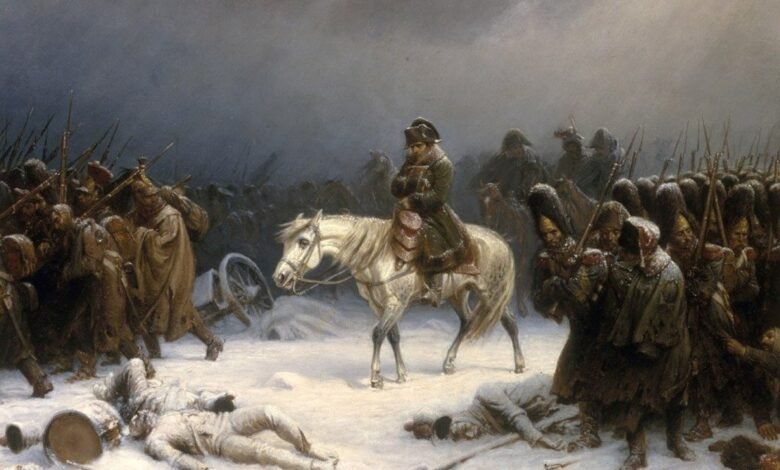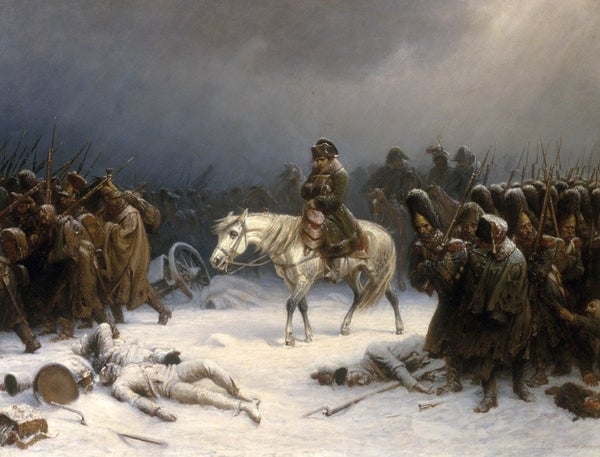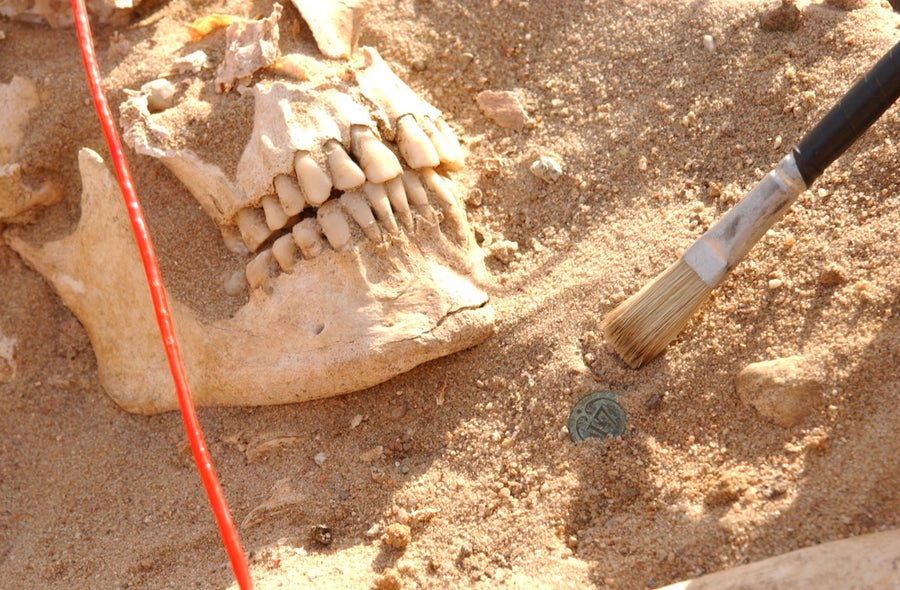Ancient DNA Reveals New Diseases behind Napoleon’s 1812 Russian Retreat

October 24, 2025
3 min read
Napoleon’s Defeat in Russia Was Aided by Two Surprising Deadly Diseases
Disease-causing bacteria that have been recently discovered in the teeth of Napoleonic soldiers may have spurred the massive infantry’s demise during its retreat from Russia

Napoleon’s retreat from Moscow.
Adolph Northen; Public Domain
In 1812 Napoleon Bonaparte invaded Russia with one of the largest armies in history—the “Grande Armée” of about half a million men. But when they were forced to retreat, harsh winter conditions, starvation and disease decimated the invaders. Historians estimate that around 300,000 of these men died.
Historical accounts, early DNA studies and remains of body lice found on the soldiers support the idea that typhus and trench fever contributed to the fall of the army. Larger debate over the French retreat and the role of disease still festers, however.
“It’s one of the biggest mysteries in history because ‘Why [did] Napoleon lose?’” says Rémi Barbieri, a postdoctoral researcher at the Institute of Genomics at the University of Tartu in Estonia.
On supporting science journalism
If you’re enjoying this article, consider supporting our award-winning journalism by subscribing. By purchasing a subscription you are helping to ensure the future of impactful stories about the discoveries and ideas shaping our world today.
Ancient DNA holds a clue. Genetic material recovered from historical fossils, skeletons and mummies has unearthed mysteries of our ancestors trapped in time. In a new study in the journal Current Biology, Barbieri and his colleagues suggest that two previously unsuspected pathogens struck Napoleon’s massive army: Salmonella enterica, a bacterium that causes paratyphoid fever, and Borrelia recurrentis, a bacterium that is spread by body lice and causes relapsing fever. Both could have been deadly among soldiers suffering from starvation and severe cold.
“We were expecting to find the pathogens that have been already reported,” says geneticist Nicolás Rascovan, a study co-author and head of the Microbial Paleogenomics Unit at the Pasteur Institute in France. But when the researchers analyzed the DNA of the 13 Napoleonic soldiers’ teeth, they did not find the bacteria that cause either typhus or trench fever, two diseases that have previously been associated with skeletons from the site. Though the team didn’t detect those diseases, that doesn’t mean that they didn’t plague Napoleon’s army, Rascovan emphasizes.
“What [the study] shows is that there was a whole range of diseases that were affecting these people,” he says.
“The study is very sound,” says Marcela Sandoval-Velasco, an assistant professor at the Center for Genome Sciences of the National Autonomous University of Mexico, who studies molecular biology to answer questions about our past. Though the team only had 13 samples to work with, she appreciated how the researchers clearly laid out their limitations.

Skull of a soldier from Napoleon’s army.
Michel Signoli, Aix-Marseille Université
In 2002 researchers excavated a site with a mass grave of 2,000 to 3,000 people in Vilnius, Lithuania. Napoleonic artifacts lay scattered around the skeletons. These included old buttons and belts, suggesting that the remains represented soldiers of Napoleon’s army who had retreated from Russia in 1812. Rascovan and his colleagues only selected 13 individuals to preserve as many skeletons as they could. The researchers also chose this small number because they needed teeth that were in the best condition.
In the lab, the team pried the soldiers’ teeth open. They put scraped dental pulp into a DNA sequencing machine. Once sequenced, the scientists sorted the DNA results for disease-causing bacteria. They compared suspected pathogen DNA to known genome sequences and then matched it to the two bacteria.
“By just reading historical accounts, [it] was impossible to suspect these two pathogens,” Barbieri says. But in developing this new methodology, the researchers could identify the bacteria from small fragments of DNA. “Personally, I’m very excited also by the methodology.”
Looking ahead, the researchers plan to keep uncovering the role pathogens played in history, albeit in different locations. While Rascovan will focus on infectious diseases in the Americas, Barbieri will continue to home in on European history.
It’s Time to Stand Up for Science
If you enjoyed this article, I’d like to ask for your support. Scientific American has served as an advocate for science and industry for 180 years, and right now may be the most critical moment in that two-century history.
I’ve been a Scientific American subscriber since I was 12 years old, and it helped shape the way I look at the world. SciAm always educates and delights me, and inspires a sense of awe for our vast, beautiful universe. I hope it does that for you, too.
If you subscribe to Scientific American, you help ensure that our coverage is centered on meaningful research and discovery; that we have the resources to report on the decisions that threaten labs across the U.S.; and that we support both budding and working scientists at a time when the value of science itself too often goes unrecognized.
In return, you get essential news, captivating podcasts, brilliant infographics, can’t-miss newsletters, must-watch videos, challenging games, and the science world’s best writing and reporting. You can even gift someone a subscription.
There has never been a more important time for us to stand up and show why science matters. I hope you’ll support us in that mission.





